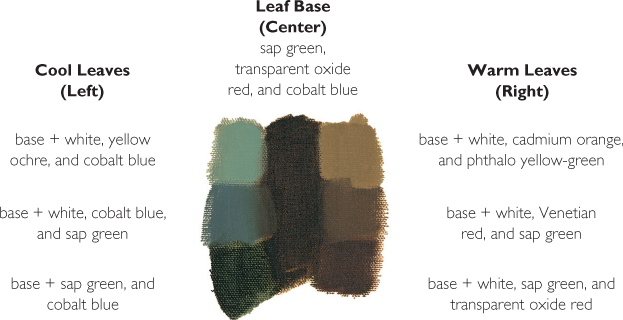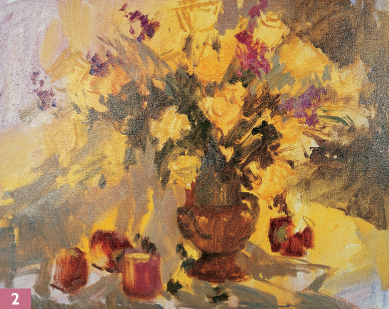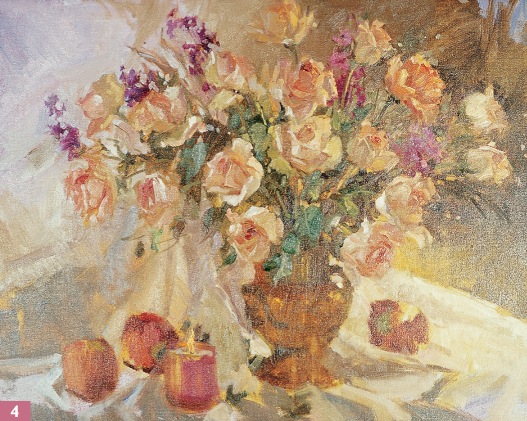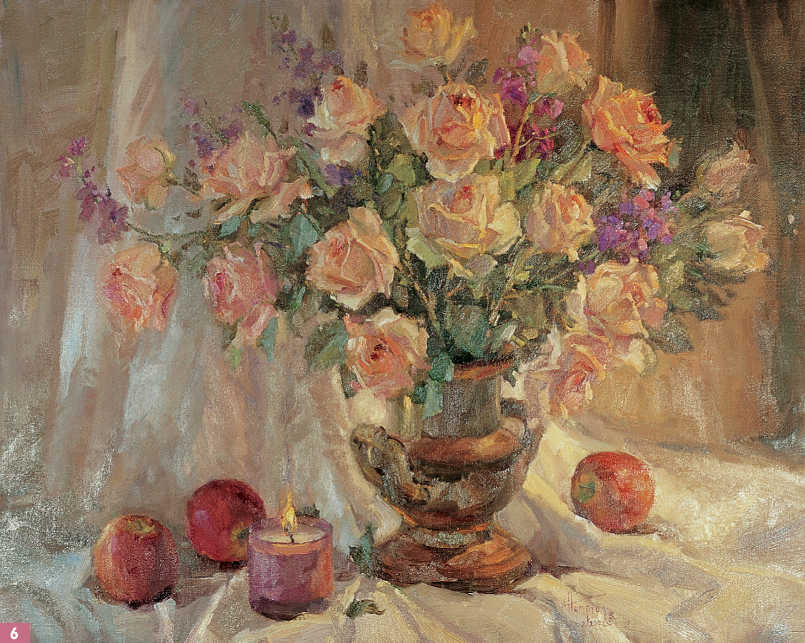Lesson 6: Setting up a Still Life
Painting still lifes is an age-old artistic practice that is great for studying composition and light. Like a landscape, a still life composition should have a visual path that leads your eye in and around the painting as well as a distinct center of interest. However, unlike a landscape, you’re in control of choosing the objects in the scene and the type and direction of the light source. When setting up a still life, experiment with lighting, as this can make all the difference in whether a scene is lively and dynamic or flat and dull. Moreover, to add interest and variation to your still lifes, choose objects of different shapes, colors, and textures. For example, in this still life, artist Anita Hampton chose to contrast the bulbous shapes of roses and apples with a cylindrical vase and a somewhat square, vertical candle.
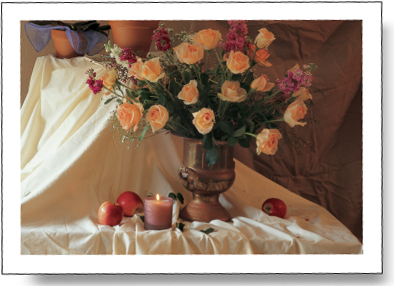
Choosing a Light Source Natural light (such as light from a north window) is much cooler than artificial light (such as light from a lamp or studio light). Here I chose to use both because I like the lively contrast between the cooler natural light from a window to the left of the scene and the warmer hues created by a studio light on the right.

Step One Once I’m happy with my setup, I lay in a thin wash of Indian yellow with a large bristle brush. Then I add a touch of quinacridone rose and apply the color liberally with broad stokes to quickly cover the canvas. For the edges, I create a thin mix of quinacridone rose and cobalt blue. I establish the cooler hues on the right by adding more blue to the mix. For the warmer hues in the flower area, I add more quinacridone rose. To avoid harsh color changes, I gently blend the edges of these washes with a paper towel. Then I block in the basic shapes of my composition with a mix of sap green, cadmium orange, and cadmium red light.
Step Two Now, starting with the green leaves, I block in the darkest values with a mixture of sap green, transparent oxide red, and cobalt blue. I use a medium filbert to create soft, blended edges. I further develop the darkest values with varying mixes of a little phthalo yellow-green, rose, cadmium red light, and cobalt blue added to the original green mixture. The vase has more red with only a little green, and the leaves have more green with only a little red. For the apples, I mix rose, transparent oxide red, and phthalo yellow-green. Next I block in the shadows on the cloth with a mix of white, cobalt blue, and transparent oxide red. I want the cloth to have rich variation, so I create several shades of this mix by adding varying amounts of cadmium red light, cerulean blue, yellow ochre, and cadmium orange. For the candleholder, I mix white, rose, cobalt blue, and a touch of yellow ochre.
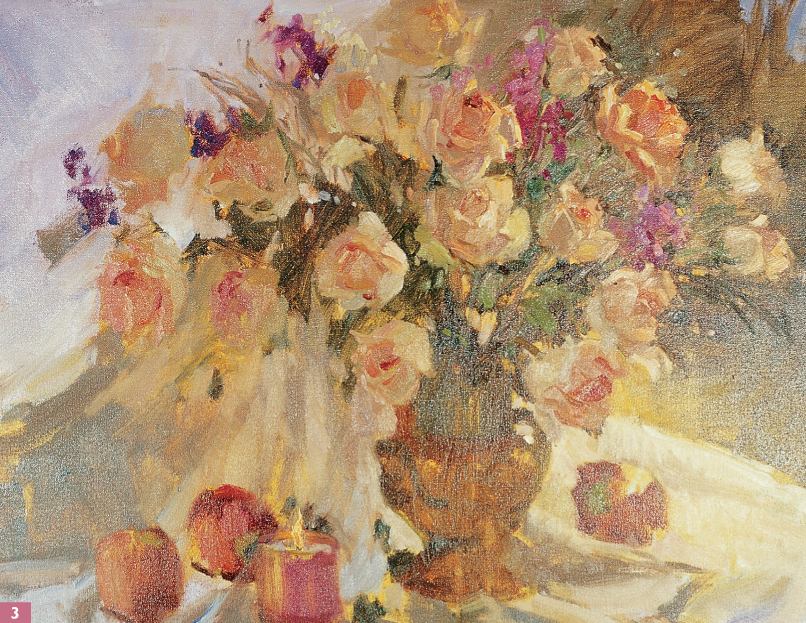
Step Three Now I paint the roses with a small flat brush and a basic mix of rose, transparent oxide red, Indian yellow, and a touch of phthalo yellow-green. For the flowers on the right, I warm the mix with cadmium red light or cadmium orange. For the flowers on the left I cool the mix with rose, cobalt blue, and a touch of white. For the warmest gray versions of the mix, I add a little cadmium yellow light, Indian yellow, or cadmium orange. Next I block in the light spots on the tablecloth around the vase with a mix of white, cobalt blue, transparent oxide red, and cadmium yellow light.
Step Four Now I add highlights, making the right side warmer and the left side cooler. I warm the petals on the right with different mixes of white, cadmium yellow light, cadmium orange, and a little cadmium red light. Then I mix rose, cobalt blue, and transparent oxide red into some of the shadowed petals in the center of each rose, blending the color with light strokes to soften any hard edges. For the highlights, I mix white, rose, and a touch of cobalt blue. I paint the leaves on the left with white, cobalt blue, and a touch of yellow ochre. For the warmer leaves on the right, I mix white, cadmium orange, phthalo yellow-green, sap green, and transparent oxide red. I paint the stems with a mixture of white, rose, cobalt blue, and a touch of yellow ochre.
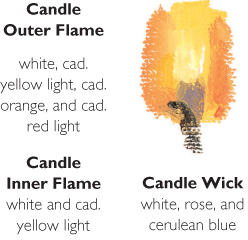
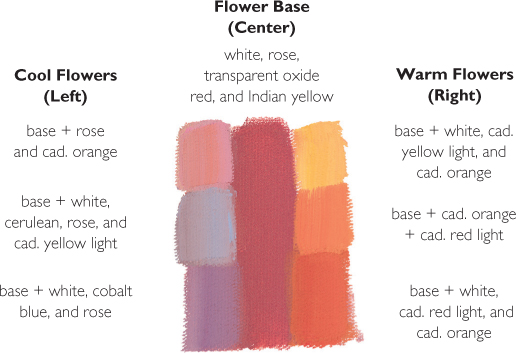
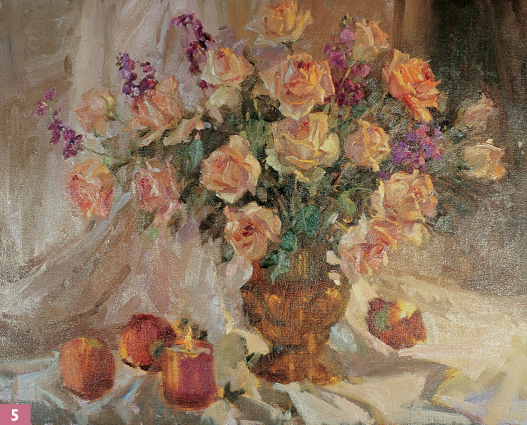
Step Five I use a variety of gray mixes to develop the cloth and background. For the darker areas of the background and the folds in the tablecloth, I use mixes of cobalt blue, transparent oxide red, cadmium orange, phthalo yellow-green, and a little Venetian red. I add touches of lighter colors to the background with white, cobalt blue, rose, cadmium orange, and a little cadmium yellow light. Where the warm artificial light falls on the table, I add cadmium yellow light and cadmium orange.
Step Six Now I add details to the apples. For the stems, I use a mix of yellow ochre, phthalo yellow-green, cobalt blue, and sap green. For the darker parts of the apples, I mix rose, transparent oxide red, and sap green. I touch up the stems with a mix of sap green, transparent oxide red, and cobalt blue. I paint the candleholder with a mix of white, rose, cobalt blue, and a touch of yellow ochre, warming the right side with a mixture of cadmium yellow light and cadmium orange. For the left side, I add more rose and cobalt blue to the mixture. For the flame’s center, I create a thick mix of white and pure cadmium yellow light. For the darker area of the flame, I use a mix of white, cadmium yellow light, and cadmium orange, adding a touch of cadmium red light next to the yellow center. At the base of the flame, I complement the orange hue with a dark mix of white, rose, and cerulean blue. To create smoke, I add transparent oxide red and cobalt blue to the mix and brush this color upward from the tip of the flame. When I assess the painting, I decide to change the cloth folds. I want the background to have more linear, vertical shapes to counterbalance the round forms of the flowers.
